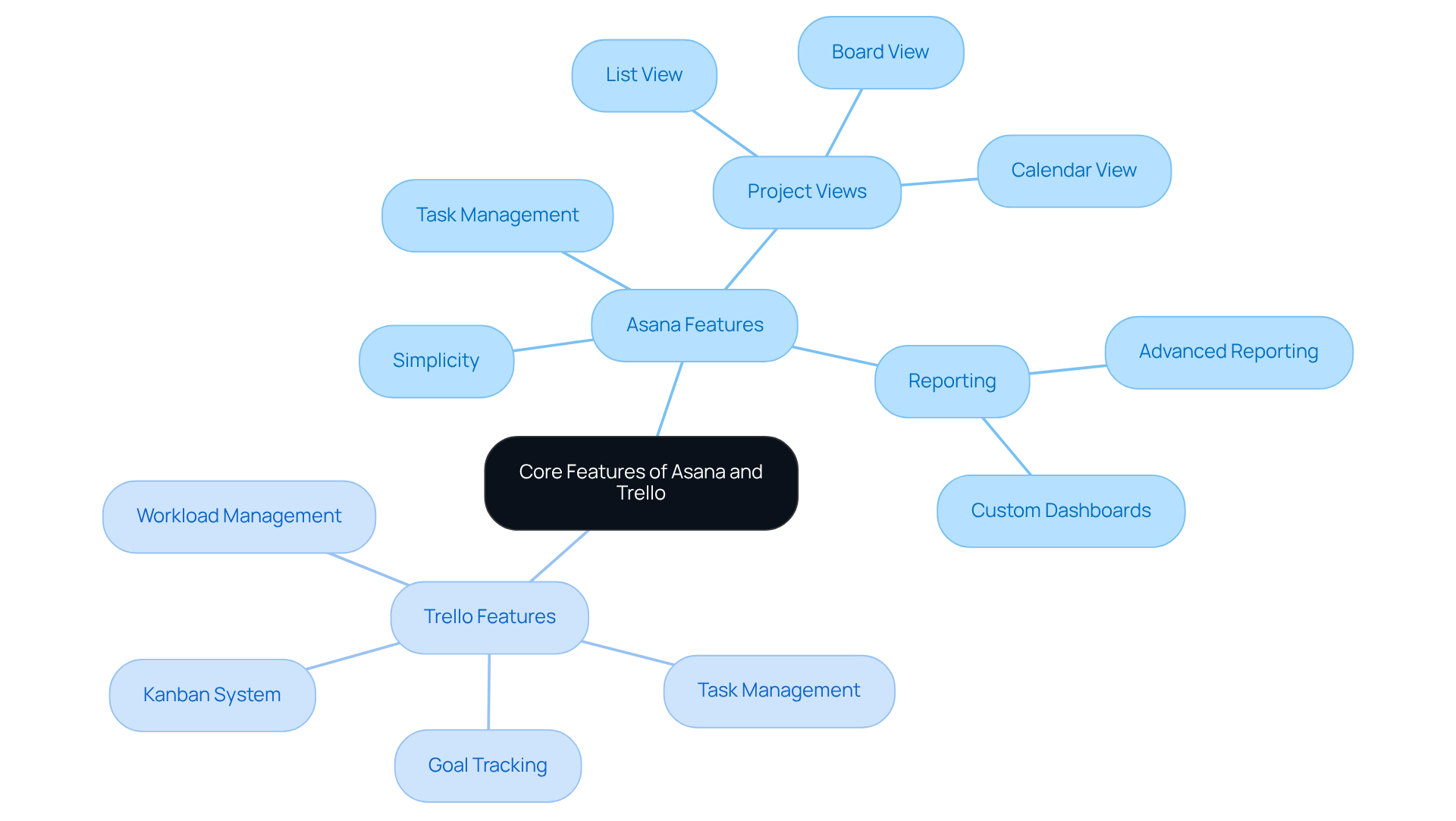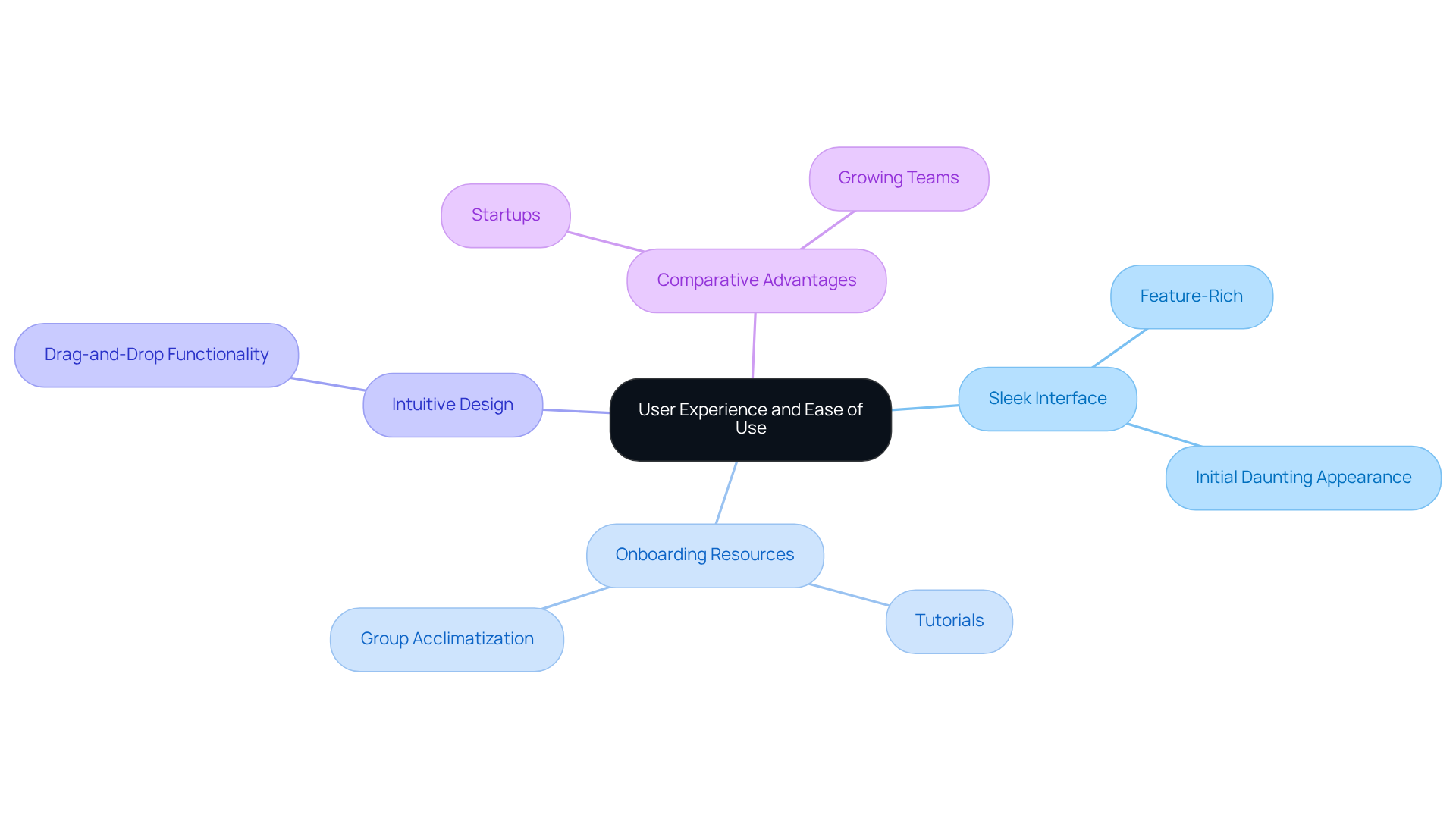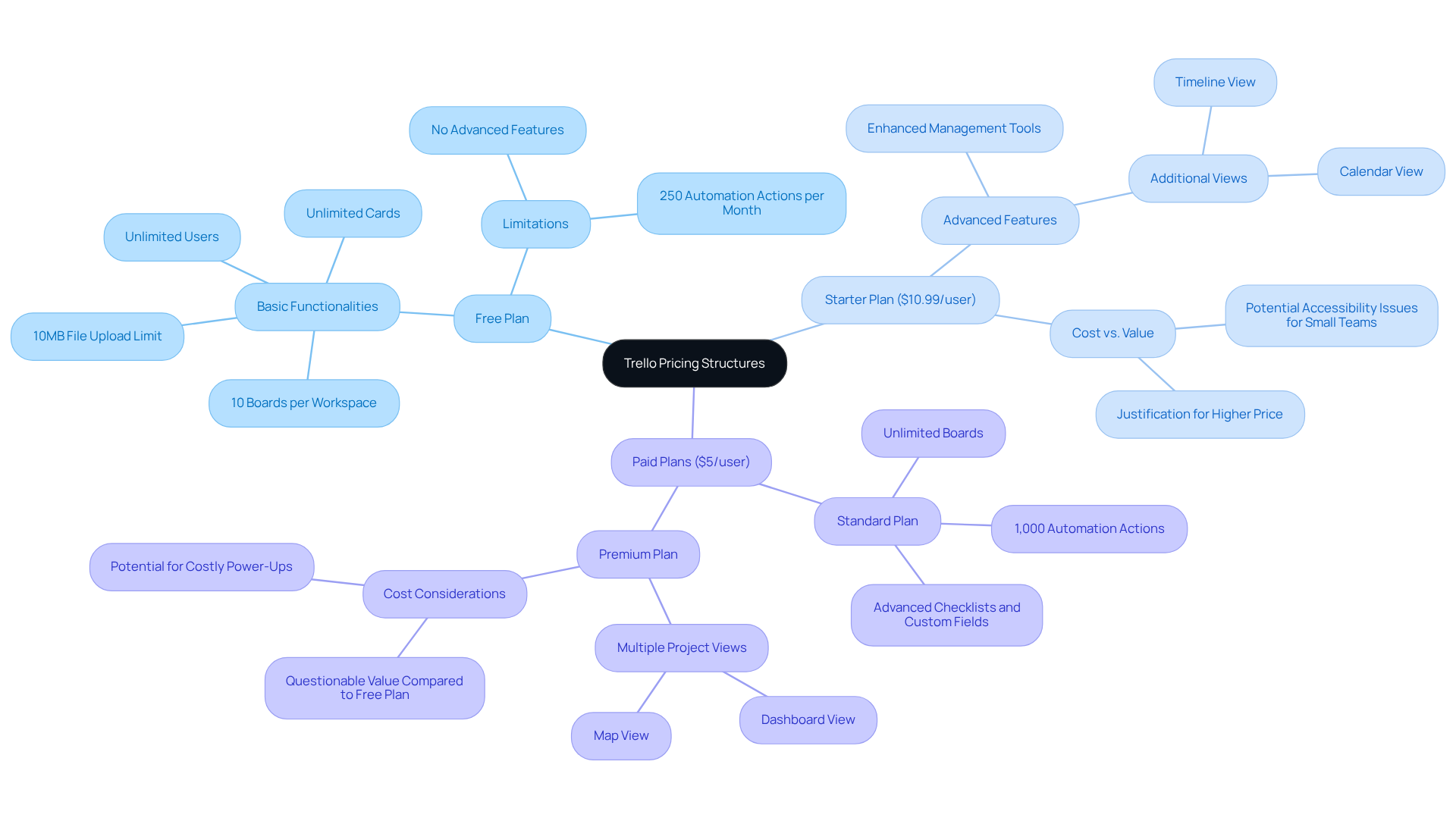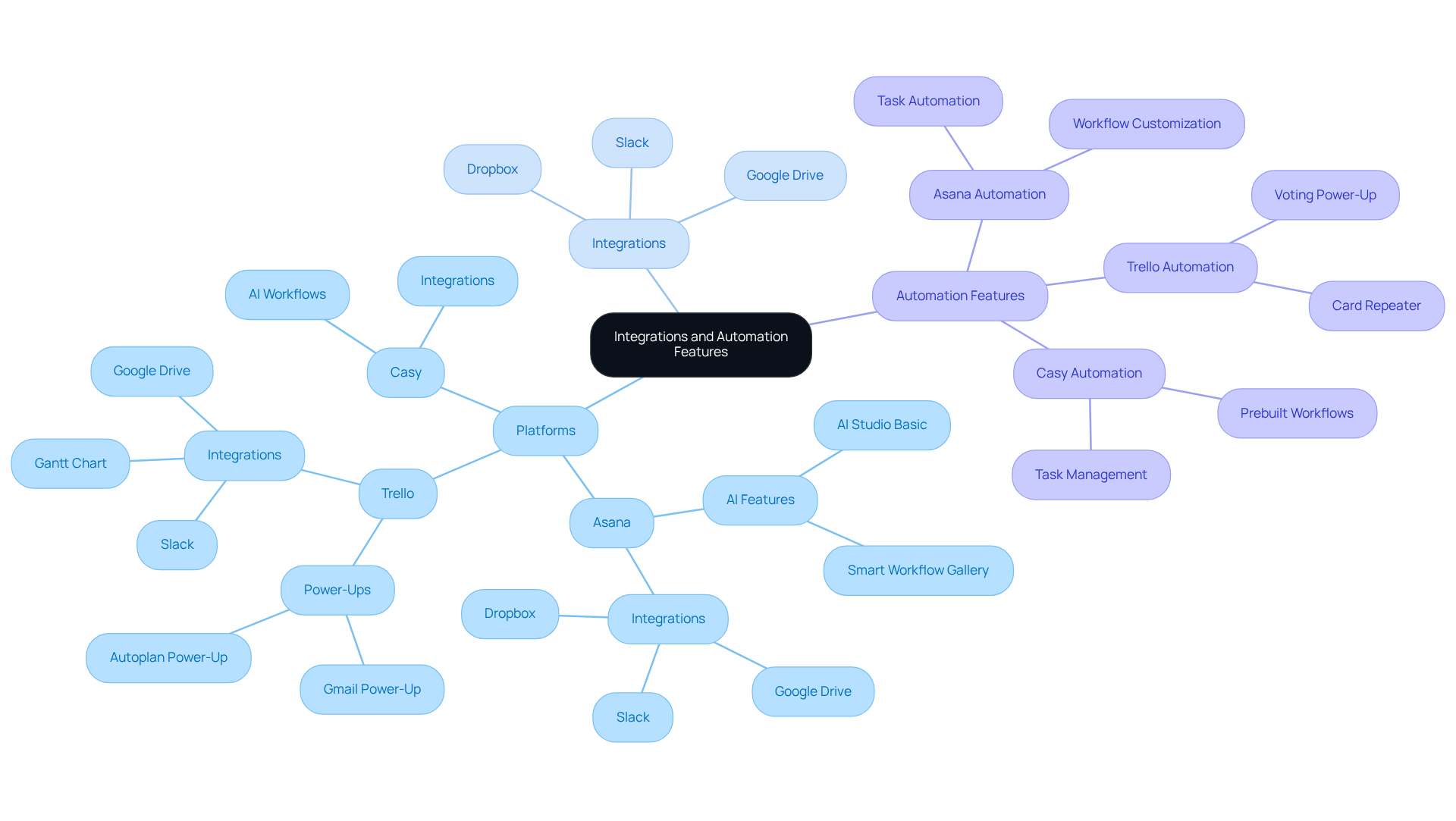Overview
This article provides a detailed comparison of Asana and Trello, emphasizing that Asana delivers a comprehensive suite of features for effective task management. In contrast, Trello offers a simpler, visually intuitive Kanban-style approach. Such an analysis is crucial for startup founders, as it aids in selecting the right tool tailored to their project's complexity and team size.
- Asana is particularly advantageous for thorough project oversight, whereas Trello is ideally suited for smaller teams or less complex tasks.
By understanding these distinctions, founders can make informed decisions that align with their operational needs.
Introduction
Navigating the landscape of project management tools poses a significant challenge for startup founders, particularly when deciding between Asana and Trello. Each platform offers distinct features designed to boost productivity and streamline workflows, catering to diverse needs and team dynamics.
As startups strive for efficient solutions to manage their expanding projects, a critical question emerges: which tool strikes the optimal balance of functionality, user experience, and cost-effectiveness?
This article presents a comparative analysis of Asana and Trello, emphasizing their core features, user experiences, pricing structures, and integration capabilities, ultimately guiding founders toward making an informed decision.
Core Features of Asana and Trello
When comparing Asana vs Trello, Asana presents a robust suite of features designed for comprehensive task management, encompassing assignments, due dates, timelines, and advanced reporting capabilities. It offers multiple project views, including list, board, and calendar formats, making it adaptable for various project types.
In contrast, when comparing Asana vs Trello, it is evident that Trello employs a visually intuitive Kanban-style board system, allowing users to create boards, lists, and cards for effective task management.
In the comparison of Asana vs Trello, Asana is simpler and more straightforward, but it may lack some of the advanced functionalities that Trello offers, such as goal tracking and workload management.
For startups that require thorough project oversight, the features of Asana vs Trello may be more beneficial, with Trello's simplicity being ideal for smaller teams or less complex projects.

User Experience and Ease of Use
The application presents a sleek and modern interface that, although feature-rich, can initially appear daunting to new users. To mitigate this, Asana provides an extensive array of onboarding resources and tutorials designed to facilitate group acclimatization. In contrast, this platform is celebrated for its intuitive design, enabling users to engage in task management effortlessly. Its drag-and-drop functionality enhances accessibility, making it particularly suitable for groups unfamiliar with project management tools.
For startups that emphasize rapid adoption and minimal learning curves, this tool frequently stands out as the more advantageous choice. However, while Asana may entail a steeper learning curve, it compensates for this with a broader range of functionalities that can significantly support groups as they grow.

Pricing Structures and Value for Startups
Trello presents a compelling budget-friendly pricing structure, featuring a free plan that encompasses basic functionalities, alongside paid plans commencing at just $5 per user per month. This affordability positions it as an attractive option for small teams or startups aiming to minimize costs.
However, the platform's pricing escalates to $10.99 per user monthly for its Starter plan, which introduces additional advanced features, potentially making it less accessible for very small groups. While Trello boasts a broader array of tools, startups must weigh these extra costs against the potential benefits of enhanced management capabilities.
Ultimately, when considering Asana vs Trello, this project management tool may be particularly suitable for startups focused on cost savings, while the alternative option could justify its higher price point through its extensive functionalities tailored for larger teams or more complex projects.

Integrations and Automation Features
Both platforms offer extensive integration capabilities, connecting with a wide range of applications such as Slack, Google Drive, and Dropbox. With support for over 270 integrations, these platforms enable groups to automate workflows and enhance collaboration across various tools. Notably, the introduction of advanced AI features in June 2025, including the Smart Workflow Gallery, will empower teams to adopt AI-driven workflows swiftly, significantly boosting productivity.
Additionally, the platform provides numerous integrations through its 'Power-Ups,' like the Gmail Power-Up and the Autoplan Power-Up, which enhance board functionality. However, it’s important to note that the total number of available integrations is slightly lower than that of its competitor. When it comes to automation, the platform excels with advanced features, allowing users to establish complex workflows and automate repetitive tasks effortlessly. In contrast, the automation capabilities of the other tool, while efficient, are more fundamental and may require additional Power-Ups for enhanced functionality.
For startups looking to improve efficiency through automation, a more robust option may be available. Meanwhile, Trello's integrations offer a simpler solution for teams. Real-world examples, such as the Viessmann Group's utilization of Asana vs Trello to manage intricate global initiatives, showcase how these project management tools can enhance productivity and optimize operations in dynamic environments.
Looking ahead, Casy, an innovative project management tool, is set to launch new AI workflows in Spring 2025, presenting another alternative for teams eager to enhance their project management capabilities. Are you ready to explore how these solutions can transform your workflow?

Conclusion
In evaluating Asana and Trello, it becomes evident that each platform presents unique advantages tailored to diverse project management needs. Asana features a comprehensive suite ideal for startups that require detailed task oversight. Conversely, Trello's intuitive Kanban-style interface appeals to teams seeking simplicity and visual task management.
Key aspects include:
- Asana's advanced reporting capabilities and multiple project views, enhancing its functionality for larger teams.
- Trello’s user-friendly design and budget-friendly pricing structure make it an attractive option for smaller startups.
- Both platforms offer extensive integration capabilities; however, Trello's automation features stand out for their simplicity, while Asana provides a broader range of functionalities.
Ultimately, the decision between Asana and Trello hinges on specific team needs and project complexity. Startups must carefully assess their unique requirements—whether they necessitate robust features or a straightforward, cost-effective solution. Choosing the right project management tool can significantly enhance productivity and streamline workflows, paving the way for successful project outcomes. Are you ready to elevate your project management strategy?
Frequently Asked Questions
What are the core features of Asana?
Asana offers a robust suite of features for comprehensive task management, including assignments, due dates, timelines, and advanced reporting capabilities. It provides multiple project views, such as list, board, and calendar formats.
How does Trello differ from Asana in terms of task management?
Trello uses a visually intuitive Kanban-style board system, allowing users to create boards, lists, and cards for effective task management, focusing on simplicity and ease of use.
Which platform is simpler, Asana or Trello?
Asana is generally considered simpler and more straightforward, but it may lack some of the advanced functionalities that Trello offers.
What advanced functionalities does Trello provide that Asana may lack?
Trello provides features such as goal tracking and workload management, which may not be as developed in Asana.
Which platform is better suited for startups?
Asana may be more beneficial for startups that require thorough project oversight, while Trello's simplicity is ideal for smaller teams or less complex projects.




